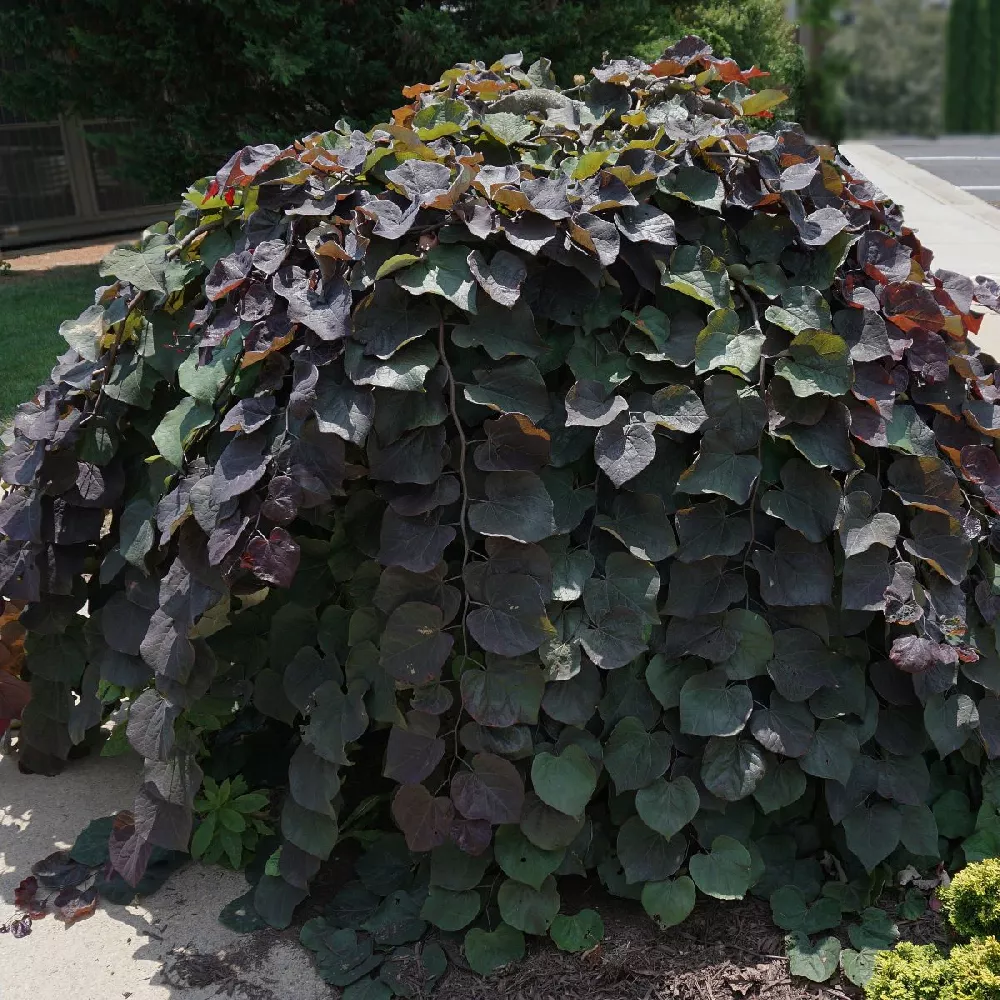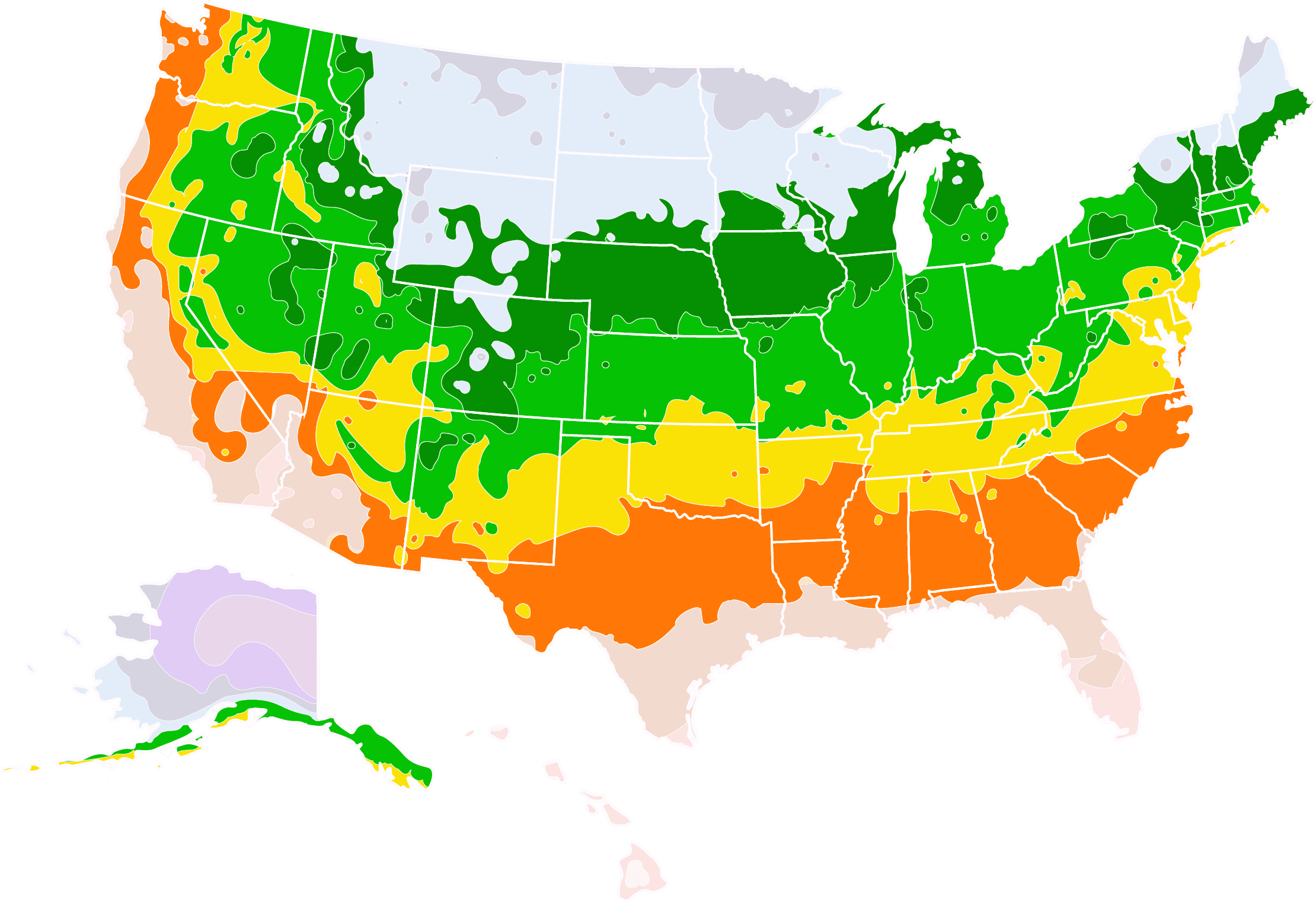Ruby Falls Redbud Tree for Sale - Buying & Growing Guide
- Ships in 1-2 days
- 1-Year Warranty Eligible
- Pots or accessories are not included unless specified in the product options.
Shipping Details:
Once your order is shipped, you’ll receive an email with a tracking number and estimated delivery date. Most orders ship immediately, but some items are seasonal and may only ship in spring or fall. These products are noted on the website.
The Ruby Falls redbud tree is yet another fantastic ornamental redbud tree variety with a unique look that is sure to stand out in your garden. Like all redbud trees, the Ruby Falls redbud blooms in early spring with striking purple flowers that blanket the entire canopy. The blooms are followed by large heart-shaped leaves, which hold a deep purple color during the growing season. This variety, Cercis canadensis 'Ruby Falls,' also differentiates itself from other redbuds with its compact, almost shrub-like size and its distinct weeping growth habit.
- The long branches create a weeping form.
- The Ruby Falls redbud tree boasts dark purple foliage during the growing season.
- It has bright purple flowers in early spring.
Plant Care
Sunlight

The Ruby Falls redbud tree adapts well to both full sun and partial shade settings.
Watering
Keep soil moist during establishment, then water about once per week after establishment.
Fertilizing

Apply a general-purpose fertilizer once per year in early spring.
Planting and Care
Planting instructions
Plant your Ruby Falls redbud tree in a location that receives about four to six hours of sunlight per day or more. The soil in that location should be slightly acidic and somewhat nutrient-dense. Once you find a location with those conditions, dig a hole that is as deep as the root ball and twice as wide. Place your tree in the hole and backfill while watering. Once the hole is entirely filled, complete the planting process by applying a healthy layer of mulch over the soil that covers the roots.
Watering and nutrients
A newly-planted Ruby Falls redbud tree should receive water frequently enough to keep the soil consistently moist until the tree is established. Once this tree is established, it will have some drought tolerance but will perform better with supplemental watering once per week. Fertilize your Ruby Falls redbud tree during the early spring season. It’s best to feed this plant with a general-purpose fertilizer that has equal amounts of nitrogen, phosphorus, and potassium or use an organic soil amendment, such as compost or manure.
Pollination
The Ruby Falls redbud tree is quite beneficial to pollinator species that live in your neighborhood. The early-spring flowers of this tree provide nectar for bees and other flying insects. Those flowers are also bisexual, which allows a single tree to pollinate itself rather than relying on a second tree for cross-pollination. Upon pollination, redbuds develop a set of legume fruits that are about 2 to 3 inches long. However, gardeners rarely, if ever, grow these plants with the goal of fruit harvest in mind.
Pruning
When pruning a Ruby Falls redbud tree or any other redbud tree variety, you should wait until the blooms have faded. Pruning too early can cause you to reduce the number of flowers that appear on your tree during the spring season. Prune to remove any part of the tree that is damaged or diseased. You may also prune to improve the overall shape of this tree. However, even without shaping, the Ruby Falls redbud takes on a lovely weeping form.
Pests, diseases, and animals
Redbud trees often face issues with canker, and the Ruby Falls redbud tree is no exception. This disease typically affects the stems of this tree, causing them to die back. Additional disease problems include leaf spots, wilt, and more. Along with those infection risks, the Ruby Falls redbud tree can also encounter pest issues. Scale, caterpillars, leafhoppers, and other common garden pests all pose a threat to your tree. In rarer cases, the Ruby Falls redbud may also experience root rot, usually resulting from overwatering.
Achieving maximum results
Whether or not your Ruby Falls redbud tree looks its best often depends on how you choose to prune this plant. The Ruby Falls redbud can sprout shoots from the base of its trunk. Its main branches can also become so long that they trail on the ground. Removing suckers and controlling the length of this tree’s branches will help keep its appearance interesting but neat. The weeping nature of this plant can also result in a dense canopy. To reduce the risk of disease and ensure proper circulation, you should use your pruning cuts to thin the canopy, too.
FAQs
How large does the Ruby Falls redbud tree grow?
Where does the Ruby Falls redbud come from?
The parent species of the Ruby Falls redbud is a native species known as Cercis canadensis, or eastern redbud. The cultivar we call Ruby Falls is actually a cross between two other cultivars, the Lavender Twist redbud and the Forest Pansy redbud. The Ruby Falls redbud gets its weeping form from the Lavender Twist redbud and gets its deep purple foliage from the Forest Pansy redbud.
What kind of pollinators will the Ruby Falls redbud attract?
Like many redbuds, the Ruby Falls redbud tree blooms profusely during the spring. These flowers are not only a pleasing sight for humans, but they are also beneficial to the local ecosystem. Redbud blooms provide nectar for bees, butterflies, hummingbirds, and more. Those flying pollinators will make your garden all the more lively in the early part of the growing season. Additionally, the fruits that result from pollination may attract even more birds later in the season.
Compare Similar Products
You can't add more Product Name - Product size to the cart.
OK









